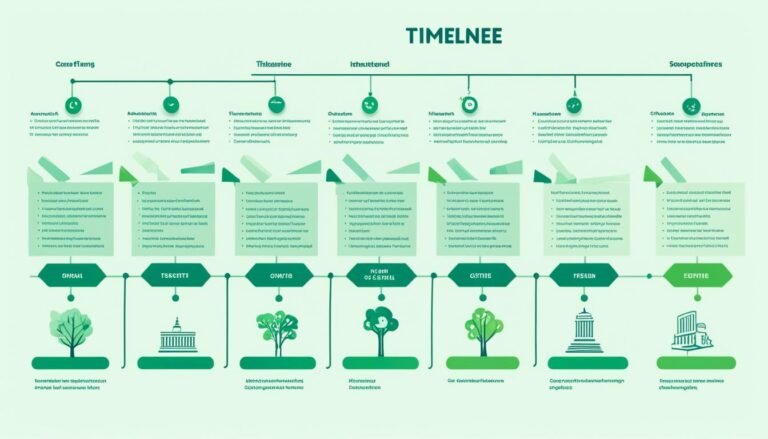Navigating CRR and CRD IV: What Irish Banks Need to Know
Basel IV rules will force all EU banks to increase their minimum needed capital by 12.6%. This is a big change, especially for Irish banks and their complex rules. In Ireland, you find both local banks and those reaching beyond its borders. With Brexit pushing some international banks to Ireland, understanding CRR and CRD IV rules is vital.
Recently, Ireland’s banking scene saw some big shifts. KBC and Ulster Bank left in 2023, making three main retail banks more important. This change spurred a review, resulting in 34 moves to make things financially safer for customers. What’s more, digital banks like Bunq and Revolut are making an impact. However, people still rely on cash in Ireland, leading to laws to protect ATM access.
Key Takeaways
- Basel IV will introduce a 12.6% increase in the minimum required capital for all EU banks, reflecting the heightened focus on financial stability.
- The Irish banking sector has undergone consolidation, impacting the regulatory landscape and prompting comprehensive reviews and recommendations.
- Digital banking is on the rise, with new entrants challenging traditional banks while legislation ensures continued cash accessibility.
- CRR and CRD IV compliance is crucial for Irish banks to align with EU frameworks and maintain consumer protection standards.
- Brexit continues to influence cross-border banking regulations, requiring agility and adaptation from Irish financial institutions.
Introduction to CRR and CRD IV
Understanding financial rules in Ireland means knowing about CRR and CRD IV. These ensure Irish banks have enough cash, good rules, and strong risk checks. The CRR is used directly. But, CRD IV is turned into Irish law to make a smooth set of rules.
Understanding Capital Requirements Regulation (CRR)
The CRR sets EU rules for how much money, safe assets, and loans banks can have. The latest rules, CRR III, need banks to follow 139 rules by 2025. These focus on making sure banks are safe and follow good environmental and social practices.
Overview of the Capital Requirements Directive IV (CRD IV)
The CRD IV supports the CRR by managing how banks are run, checked, and save money. It makes banks have more and better cash to keep the financial system strong. Overall, there are many rules and checks banks must meet.
Importance for Irish Banks
Irish banks must carefully follow CRR and CRD IV to keep trust and the market safe. With the European Central Bank watching big banks since 2014, and Ireland watching others, there’s tight control. Not following these rules can mean serious trouble.
Ireland watches all financial companies closely, especially tech and fintech, with strict checks for how they’re run and how money moves. This careful watching shows that strong leadership and risk plans are a must in Ireland.
Regulatory Landscape in Ireland
The Central Bank of Ireland (CBI) has a key role in watching over the Irish banking world. It focuses on keeping things in line with the law, stopping money laundering, and fighting terrorist financing. It works closely with both national laws and rules from the EU. Supervising things helps keep the money system safe and fair.
Role of the Central Bank of Ireland (CBI)
The CBI looks after the smaller banks and financial groups using ‘PRISM.’ This sorts the most risky issues first. Along with watching over banks, the CBI makes sure they follow rules on money laundering and laws to protect customers.
The Bank also makes sure banks follow important rules like the Capital Requirements. It checks their acts against the law. When customers have problems, they can talk to the Financial Services Ombudsman. And the CCPC stands up for fair competition.
Key Banking Regulations in Ireland
In Ireland, banks must follow strict rules to make sure they do their jobs right. This includes:
- Capital Requirements Regulation (CRR)
- Capital Requirements Directive IV (CRD IV)
- Central Bank Acts 1942 to 2018
- Central Bank (Individual Accountability Framework) Act 2023
A new law, the Central Bank (Individual Accountability Framework) Act 2023, makes bosses at banks more responsible, like in the UK. The CBI watches what banks do, manages risks, and gives them special rules to follow. Banks must fight money laundering by law.
Impact of the European Single Supervisory Mechanism (SSM)
The European Single Supervisory Mechanism (SSM) changes how banking rules are made in Ireland. Here, the ECB looks after the big banks, while the CBI watches the smaller ones. The ECB aims to make banks stronger and better in the next few years.
This system also lets banks from other EU countries work in Ireland easily. With KBC and Ulster Bank leaving, Irish banks with branches abroad are more common. These changes show how much Irish banks are connected to others in Europe.
| Regulation | Description |
|---|---|
| CRR | Sets prudential requirements for credit institutions |
| CRD IV | Defines governance and capital requirements for banks |
| Central Bank Acts | Provide the legal basis for the regulation and licensing of banks |
| Individual Accountability Framework Act | Enhances individual accountability within financial institutions |
Overall, the rules in Ireland’s banking world are always changing. They’re made by Ireland and the EU. The CBI and the ECB watch over everything to keep the money system healthy and safe.
Key Components of CRR and CRD IV
CRR and CRD IV are key rules for managing credit risk, market risk, and operational risk in banks. They help improve how banks watch over financial dangers and make sure they have enough capital under regulation.
Credit Risk Management
Under CRR and CRD IV, banks must keep enough regulatory capital to protect against loan defaults. They are also required to use strong risk assessment methods. In Ireland, big banks like AIB Group plc, Bank of America Europe DAC, and others take this very seriously.
Market Risk Management
Market risk management means protecting against risks from market changes and risky trades. Irish banks follow tough market risk rules. They must have plenty of capital for market ups and downs. Roles like the head of market risk need special approval since October 2020.
Operational Risk Management
For operational risk, CRR and CRD IV look at losses from inside problems, outside shocks, and online threats. Good financial risk control makes banks find ways to lower these risks. The Central Bank of Ireland highlights the key roles of heads of control functions and chief information officers for operational safety.
CRD IV Reporting Requirements
CRD IV sets out rules that make banks report their financial health in detailed. They have to share info about how much money they have, the risks they face, and if they have enough cash to keep running. Banks share this info through different reports, like COREP and Leverage Ratio. These reports are really important. They show how well a bank is doing and if it’s following the rules.
Prudential Reporting
Prudential reporting is key for banks to meet CRD IV standards. It makes sure they have enough money and handle risks the right way. Banks use the Extensible Business Reporting Language (XBRL) to send these reports. This format helps keep the data clear and accurate. The Irish banking crisis showed the need for strict rules. That’s why this kind of detailed reporting is so important.
Reporting Dates and Deadlines
Banks face strict deadlines for their reports. For example, reports for the CRD IV 2.9 standards must be in by 30 June 2021. Then, from 1 July 2021, they switch to a newer 3.0 standard.
IFR reporting also has set dates. Class two firms need to report by 30 September 2021. Class three firms have until 31 December 2021. Meeting these dates ensures the reports are correct and the banks are running well.
Procedure for Submitting Reports
To send in their reports, banks must use the CRD IV ONR XBRL File Upload User Procedure. They have to make sure their files are right and on time. Uploading to the Online Reporting System (ONR) is part of the process. It’s crucial to follow all the rules to get the data right and pass the checks. DataTracks can help. It makes sending in reports easier with its up-to-date formats and easy-to-use design. This helps reduce mistakes and makes sure the reports are spot on.
Source Links
- Navigating Basel IV – Profile Software
- Regulatory Compliance: Staying Ahead of the Curve: Regulatory Compliance in Ireland s Banking Sector – FasterCapital
- Regulation of Banking in Ireland: Subsidiary or Branch
- Projected implementation of the CRR III/CRD IV Banking Package – Forvis Mazars – Ireland
- In brief: banking regulatory framework in Ireland
- Reporting Requirements for Credit Institutions
- Banking Laws and Regulations | Ireland
- Regulatory Requirements and Guidance for Credit Institutions
- In brief: banking regulatory framework in Ireland
- Banking Advisory | Banking and Financial Services Law | Matheson
- The Investment Firm Directive and Regulation | Jun – 2020
- Previous Reporting Requirements MiFID Investment Firms
- No title found
- CRD IV Directive for the European Banking Authority (EBA)








